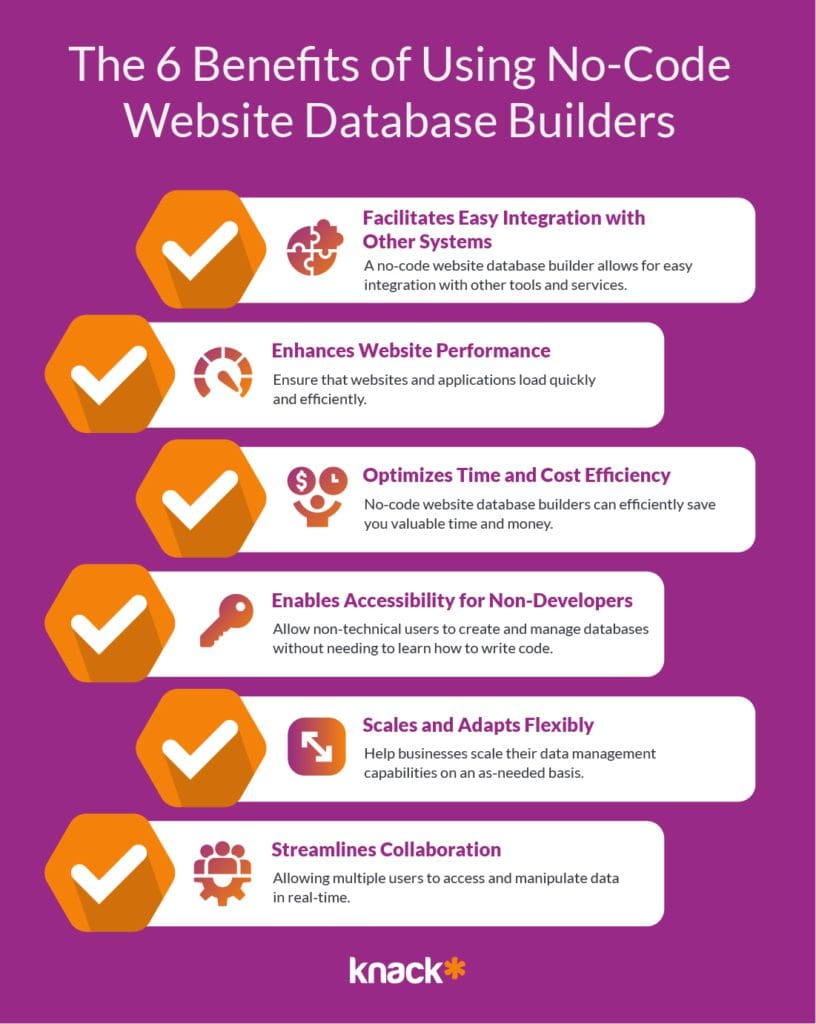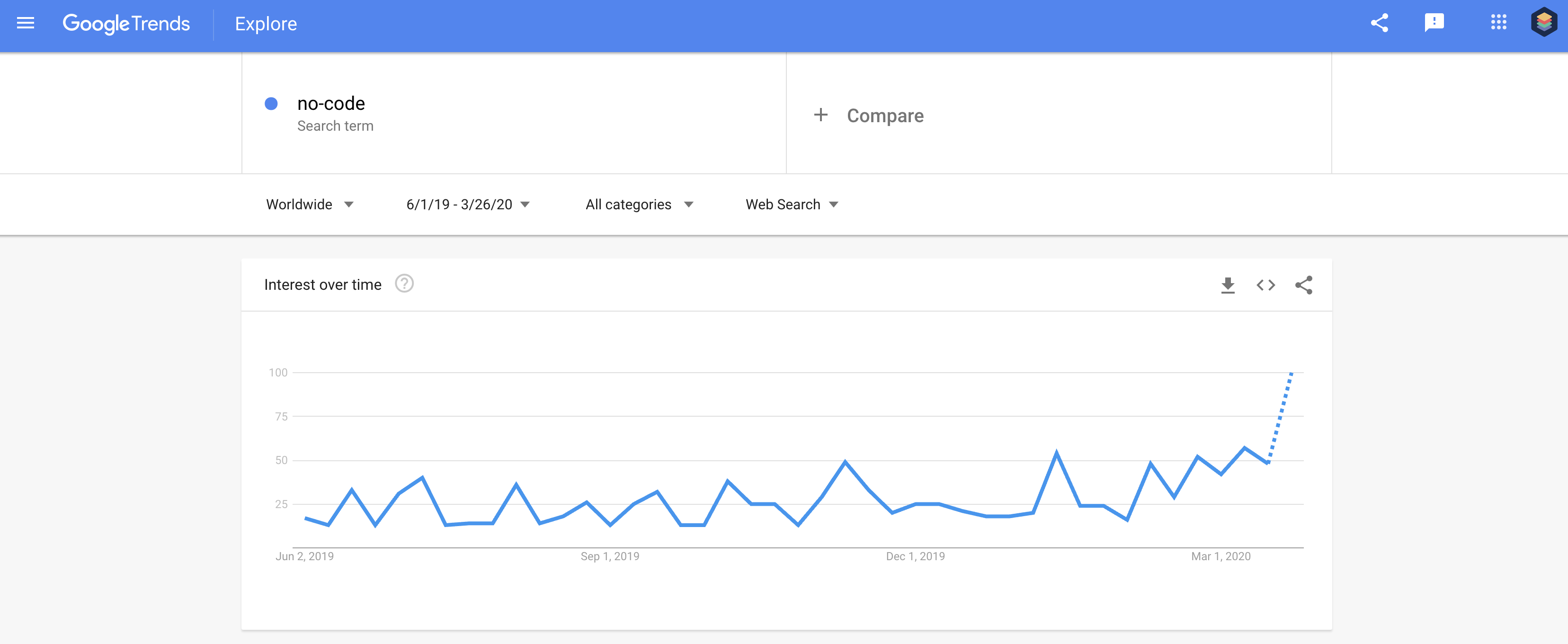Simple And Easy Open System Database Development Making Use Of No-Code Technology
Wiki Article
Exploring the Benefits of Scalable Databases That Call For No Coding Abilities for Efficient Information Management Solutions
The appearance of scalable data sources that eliminate the necessity for coding skills offers a transformative possibility for companies seeking efficient data monitoring solutions. As we take into consideration the implications of such improvements, it becomes vital to check out just how they can reshape the landscape of data management and drive sustainable growth in an affordable setting.Boosted Accessibility for Users
Enhanced ease of access for individuals is an important facet of scalable data sources, making sure that data administration systems are intuitive and straightforward. In an age where data-driven decisions are vital, ease of access enables a larger variety of individuals, including those without comprehensive technical know-how, to involve with database systems effectively. This democratization of information accessibility assists in boosted partnership across divisions, encouraging workers to make and draw out insights educated choices.Easy to use user interfaces, such as drag-and-drop attributes and visual information representation, simplify complicated data communications. These enhancements reduce the learning contour related to typical database monitoring, making it possible for individuals to focus on leveraging information as opposed to facing technical intricacies. Furthermore, scalable data sources typically incorporate real-time analytics and adjustable dashboards, supplying individuals with instant understandings tailored to their certain needs.

Cost-Effectiveness and Source Savings
Effective information monitoring not only hinges on ease of access yet additionally on cost-effectiveness and resource financial savings. Scalable data sources developed for customers without coding skills dramatically decrease monetary burdens usually connected with conventional database administration systems. By getting rid of the requirement for specialized programs proficiency, companies can allot their sources a lot more efficiently, concentrating funds on core service tasks as opposed to extensive training or hiring competent employees.Moreover, these data sources frequently utilize cloud-based solutions, which even more decrease prices associated to hardware and upkeep. Organizations can scale their database services according to their needs, preventing the expenses incurred from over-provisioning resources. This adaptability means organizations can adapt to altering demands without incurring unneeded costs, causing substantial long-lasting savings.
Furthermore, straightforward user interfaces improve data entry and administration procedures, reducing the time invested in management jobs. This efficiency converts into labor price financial savings, permitting groups to concentrate on strategic efforts as opposed to routine upkeep. Overall, embracing scalable data sources that require no coding skills fosters a much more cost-effective approach to information monitoring, allowing organizations to optimize their resources while keeping high degrees of functional performance.
Improved Collaboration Throughout Teams

Moreover, scalable databases assist in seamless communication among employee. With easy to use interfaces that require no coding skills, workers can quickly produce, modify, and share reports or dashboards tailored to their certain requirements. This democratization of information empowers non-technical users to contribute understandings, improving the joint setting.
Furthermore, these data sources sustain simultaneous access, enabling numerous individuals to work Find Out More on the very same dataset simultaneously. This attribute improves performance, as teams can involve in joint information evaluation without the threat of version control issues. The capability to leave comments or notes directly within the database better advertises dialogue and clears up data analyses.
Streamlined Information Administration Processes
In today's data-driven atmosphere, organizations recognize the necessity of structured information management processes to maximize efficiency and precision. By leveraging scalable data sources that need no coding skills, businesses can streamline their information handling and decrease the complexities generally connected with typical data source systems. This access equips non-technical individuals to engage straight with data, facilitating quicker decision-making and lowering dependence on specialized IT personnel.Structured data management procedures enhance operations by automating routine jobs such as information entry, recognition, and reporting. Automated information combination ensures that details from various resources is aggregated seamlessly, eliminating silos and cultivating a merged view of critical organization metrics (no-code). Additionally, user-friendly interfaces permit workers to adjust data conveniently, enabling them to generate understandings that drive strategic campaigns without the need for substantial training.
This efficiency not just increases operational processes yet also reduces the possibility for human mistake, guaranteeing that data stays accurate and trustworthy. Eventually, structured data management processes with scalable data sources bring about enhanced productivity, enabling companies to focus on core tasks while ensuring that their information monitoring techniques are reliable and efficient.
Scalability for Expanding Organizations

For broadening enterprises, the ability to scale up or down is crucial. A scalable data source can manage an influx of data generated from brand-new clients, products, or services, making certain that business operations continue to be nonstop. These data sources offer the ability to take care of peak loads effectively, which is vital during periods of quick growth or seasonal spikes.
In addition, several scalable database remedies are created with straightforward user interfaces that require no coding skills, empowering non-technical staff to take care of information efficiently (no-code). This democratization of data monitoring permits organizations to allocate sources purposefully and minimize dependency on specialized IT workers
Inevitably, embracing a scalable data source not only improves functional effectiveness yet also promotes a setting where companies can progress and introduce without the constraints of standard data source systems. This adaptability settings companies for long-term success in today's competitive landscape.
Verdict
To conclude, scalable databases that need no coding abilities provide considerable benefits for reliable information monitoring. These systems enhance availability for non-technical customers, reduce operational expenses, and advertise cooperation throughout groups. By streamlining data administration processes and using scalability for expanding organizations, such solutions enable organizations to adapt to altering demands successfully. Inevitably, the fostering of these straightforward data sources cultivates innovation and positions businesses for long-term success in a dynamic environment.Boosted access for customers is a critical facet of scalable data sources, making sure that data management systems are instinctive and straightforward.Straightforward user interfaces, such as drag-and-drop functions and visual information representation, simplify intricate data interactions. On the whole, embracing scalable databases that call for no coding skills fosters a much more affordable approach to information management, allowing organizations to optimize their resources while keeping high levels of functional effectiveness.
By leveraging scalable data sources that browse around this web-site need no coding hop over to these guys abilities, services can simplify their information handling and reduce the intricacies usually linked with standard data source systems - no-code.Structured data monitoring processes boost workflow by automating regular tasks such as data access, validation, and coverage
Report this wiki page